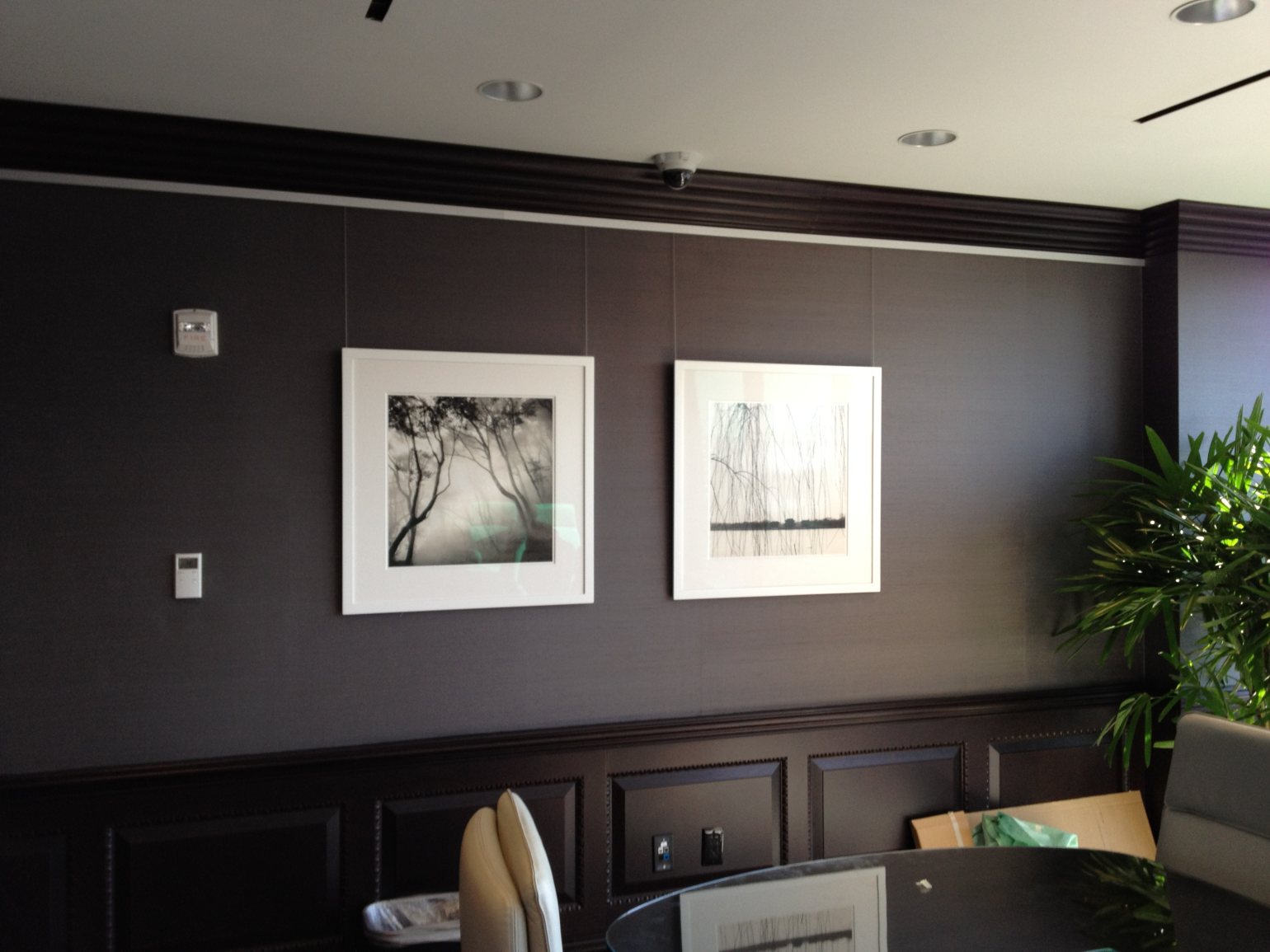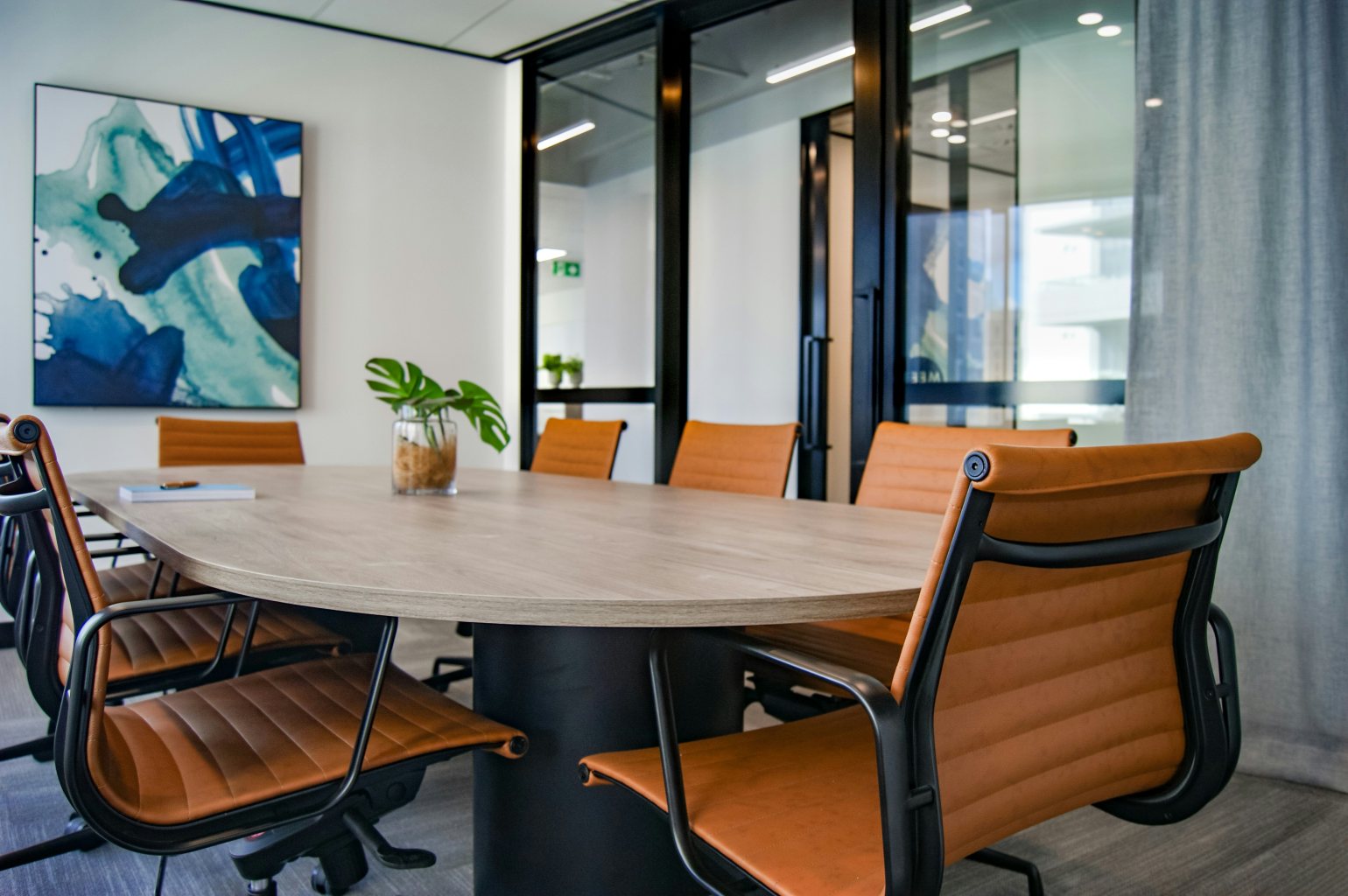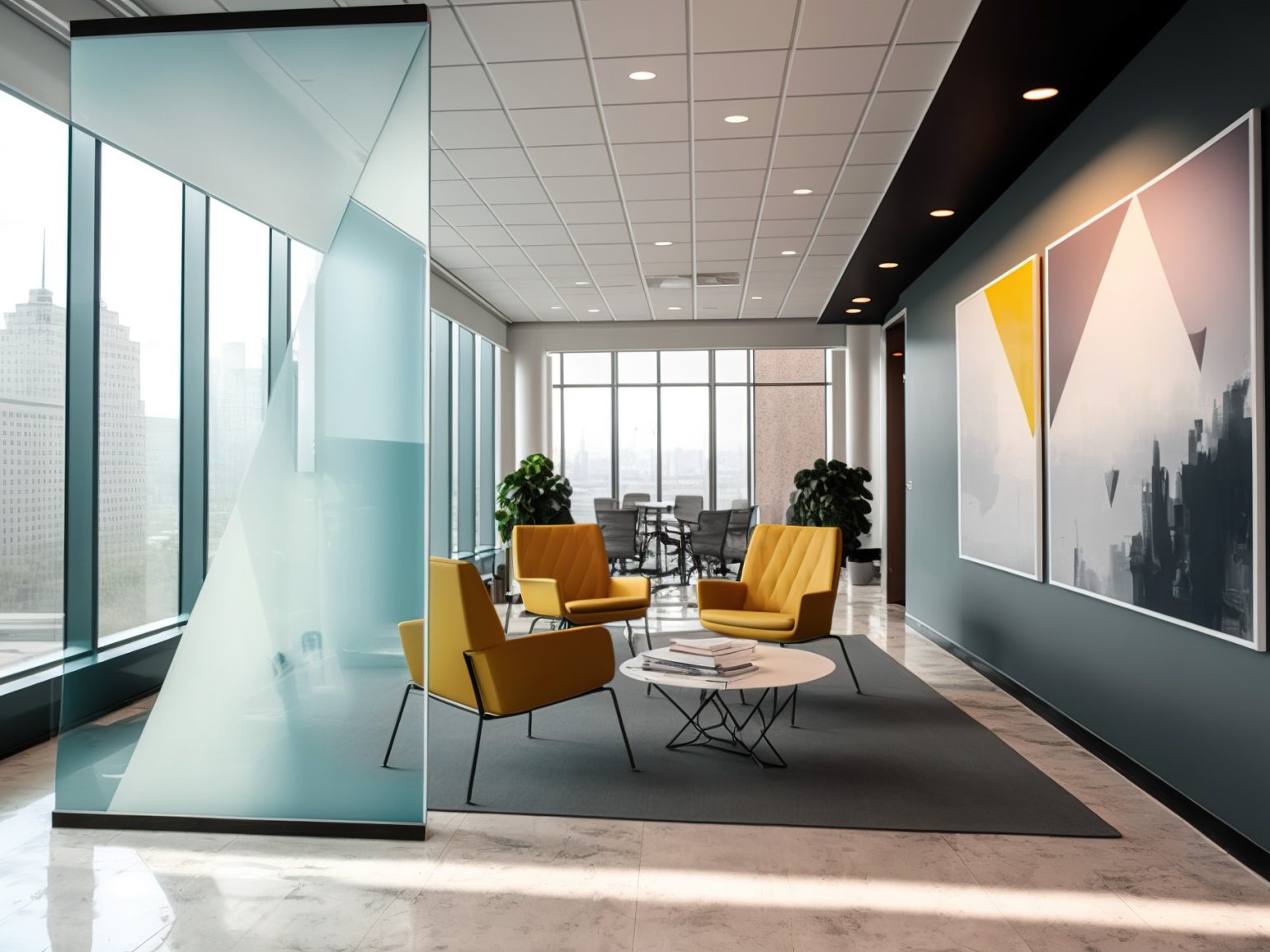Corporate Art Collections - Displaying Artworks in Commercial Spaces
Summary
Corporate art collections are increasingly being used to enhance commercial spaces, both for aesthetic factors, as well as communicating something deeper; a company’s identity, culture, and workplace strategy. From improving staff wellbeing and client experience to expressing brand values and supporting emerging artists, art is becoming central to how businesses design and experience their environments. This article explores the role of art in the workplace, the practicalities of display and security, and how Absolute Museum & Gallery Products helps companies present and protect their collections with professional-grade hanging and mounting systems.Take a walk through Microsoft’s global headquarters in Washington and you’ll find original works by Cindy Sherman, Takashi Murakami and Chuck Close lining the walls. Elsewhere, there are large-scale sculptures in atriums, photographs and one-off prints in meeting rooms, and video installations positioned along the busy corridors of the multi-billion-pound tech corporation.
This impressive and diverse collection of contemporary works forms part of the Microsoft Art Collection – a programme launched in 1987 to improve the day–to-day environment for staff and reflect the diversity of the people who shape its workforce. Today, it spans over 5,000 pieces across 180 buildings worldwide.
Microsoft is not alone in its commitment to using art as a means to improve the corporate experience. Deutsche Bank in London holds a vast collection of contemporary drawings and photography, while Progressive Insurance displays over 10,000 works across its various US office locations – with the aim to ‘enhance workspaces with stimulating and creative art installations.’
Indeed, there is plenty of thought that goes into creating such environments, beyond simply adding some decorative extras to improve the view. More and more, art is being integrated into how spaces are designed, experienced and understood – helping companies communicate distinctive values and support the wellbeing of the people who work within them.
From law firms to technology campuses to financial institutions, corporate collections are becoming an increasingly common feature of commercial architecture. Some businesses use them to project a sense of heritage or innovation, while others invest in emerging talent to bring new perspectives into the workplace.
Regardless of the intention, a carefully curated collection can offer lasting value as an asset – and as a cultural and visual anchor within the everyday life of a company.
![]()
The case for art in the workplace
Incorporating art into the workplace can shape how people feel, think and behave within it. And, while making a space more visually appealing is certainly important, art can also influence mood, reduce stress and improve focus. In client-facing areas, it can say something meaningful about a company’s values, interests or place in the world.A 2014 study by Christina Smiraglia, conducted through the Harvard Graduate School of Education, explored how employees responded to visual art in three very different workplaces: a hospital, a library and a government office.
Across interviews with 17 participants, she found that workplace art consistently evoked positive emotional responses – most commonly described as calming, uplifting or energising. Participants also reported enhanced concentration and a greater ability to reframe or refresh their thinking when interacting with artworks during the day. Just as notably, the presence of art helped encourage casual interactions among staff and contributed to a shared sense of identity and wellbeing.
Studies also show that the presence of original artwork can also play a role in recruitment and retention, contributing to a sense of atmosphere and attention to detail that employees notice – and that visitors often remember. For companies with multiple locations, a coordinated art programme can bring consistency to interior design, even where architecture varies.
Planning a display within commercial spaces
Artworks should be considered at the earliest stages of a commercial space’s design. For new builds or major refurbishments, this means involving art advisors, installers or curators during the planning phase – ideally before walls are even built. In doing so, display locations, hardware, lighting, and security measures can be integrated rather than retrofitted.Track hanging systems, for example, can be installed into walls and ceilings before plastering begins, allowing future for maximum strength, the best aesthetic finish, and flexibility without the need for visible hardware or repeated drilling. This is particularly valuable in client areas or executive floors, where layout and display needs often change over time.
In existing spaces, the approach might shift somewhat. Identifying high-impact areas – entrances, boardrooms, lift lobbies – allows artworks to be used strategically, creating focal points and supporting the intended use of each space. Size, medium and theme all matter. Again, some of our tracks are designed for retrofitting, such as the H Track, suiting such applications best. Considering how you hang artworks in any space up front will always ensure the best possible outcome for your display.
Examples of Key Track Installation Locations
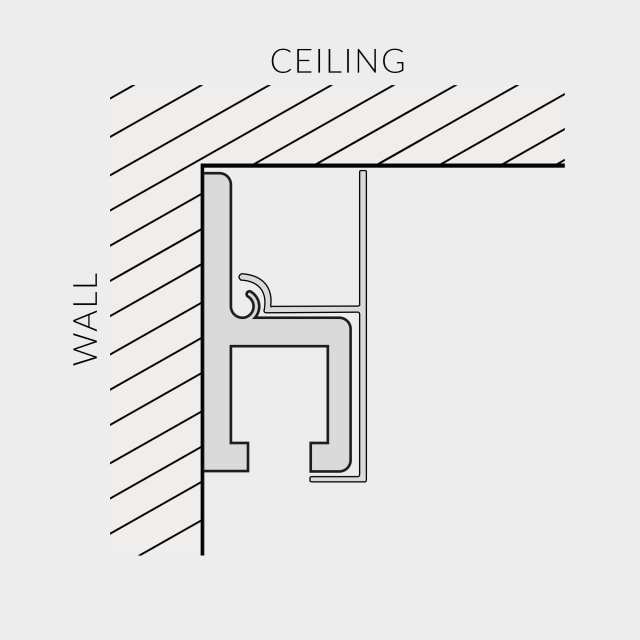
H Track
Fitted on top of finished walls. Blends well into cornice detailing.
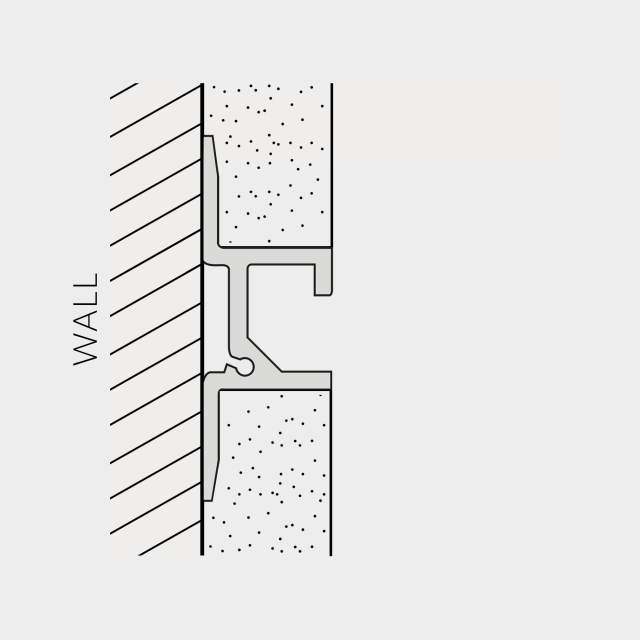
Flush Mount Track
Built into wall during construction for a highly discreet, flush finish.
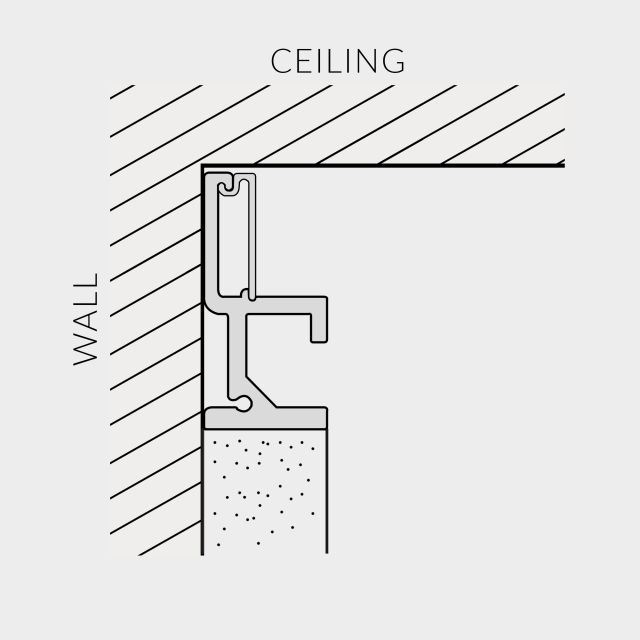
T Track
Built into wall above panels during construction or retrofit.
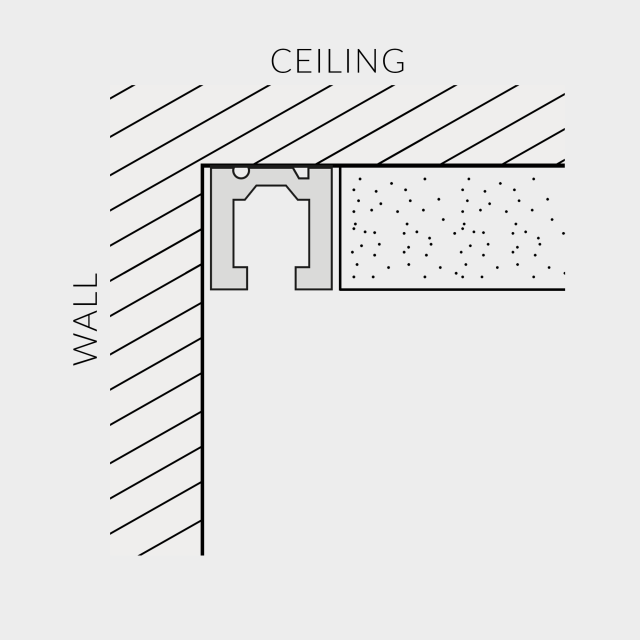
C Track
Built into ceiling during construction or retrofit.
Ensuring security without compromising presentation
Commercial art collections often include valuable or irreplaceable works. Just as one would expect in a gallery or museum, ensuring pieces are securely displayed – especially in public-facing areas – is essential. The challenge lies in protecting the art without disrupting the aesthetics or making the space feel restricted.Direct-to-wall hanging systems like the Ryman Hanger with High Security Spring Keepers provide a discreet, high-security option. Frequently used in major museums and galleries, they allow artworks to sit flush to the wall with virtually invisible hardware, while internal locking mechanisms prevent any unauthorised removal. Ryman Hangers also work with our Track Systems, to combine security with flexibility.
For heavier or rebated frames, the Link Hanger offers similar levels of security, bridging the gap between wall and frame. In heritage properties or traditional interiors, Chain Hangers can maintain a period-appropriate appearance without compromising safety.
In commercial spaces where layouts evolve or displays are updated regularly, track systems offer plenty of flexibility alongside robust support. They allow collection managers and facilities teams to move or rotate works without drilling any new holes in the walls – a particularly useful feature in leased offices or multi-use buildings.
Art in high-traffic areas also needs to be protected from accidental damage. Proper fixings, positioning, and, where necessary, sometimes even low-profile barriers all help safeguard works while maintaining an open, accessible feel.
![]()
Art as part of brand and identity
A company’s collection can speak volumes. Whether consciously or not, visitors and employees draw meaning from what is on display, and art offers a unique opportunity to communicate something beyond logos or mission statements – something visual, emotional and lasting.Some businesses choose to collect by theme – sustainability, innovation, local culture – aligning the art with brand values. Others use commissioned pieces to celebrate milestones or reflect corporate heritage. Many make space for emerging artists, bringing new ideas and perspectives into their environment.
In London, law firm Simmons & Simmons has been collecting contemporary art since the 1980s, with a focus on emerging British artists. Their offices now feature works by the likes of Damien Hirst and Tracey Emin, presented in client meeting rooms and open plan workspaces. The collection forms part of the everyday visual landscape for staff and visitors – reinforcing a reputation for forward thinking and innovation while supporting artists at early stages in their careers.
For global organisations, a unified visual language can bring coherence across offices. For smaller firms, a carefully chosen display can express individuality and ambition. In every case, the art becomes part of how the company presents itself.
To Conclude
Displaying art in a commercial environment creates spaces that feel intentional, expressive, and human. From investing in a small set of pieces for a single office or curating a multi-site collection, businesses today are treating art as part of their long-term strategy for workplace design and identity.Absolute Museum & Gallery Products work with companies and institutions around the world to help display, protect and present artworks in the best possible light. From high-security hangers to flexible track systems, we’re here to help you plan for longevity and quality – at every stage of your collection’s journey.
Support and Complimentary Samples
If you are working on a corporate project, please do not hesitate to contact us for access to expert advice and support on specifying, planning, installation and display. Due to the nature of track installation, the earlier we are involved the better, to install the best solution and installation possible is achieved. For larger projects we are also able to provide a site visit service.
Samples
We are also able to provide complimentary samples of our track systems. You can order yours here.
Request Samples-
Posted by Jade Turner
2nd July 2025


